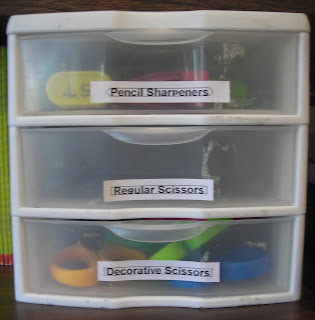* * * *
My first couple of months teaching, my fifth graders were completing headers on their papers and constantly asking, "What's the date?" Well, here was my solution to that:
Magnetic date cards are displayed each day on my board so students know the current date. Instead of using chalk to rewrite the date each day, a simple switch of the numbered cards is all it takes. I don't even have to remember to change it since it is a student's classroom job to be in charge of the date cards.
The month and number cards only cost me $1 at my local Dollar Tree Store (where I am a proud regular customer). I simply stuck some magnetic tape on each one to hang them on the chalkboard.
As is customary in most elementary classrooms, I also have a monthly calendar displayed. In addition to the dates, it also shows special events that are upcoming (birthdays, holidays, tests, etc.). Again, this calendar only set me back just $1 or $2 ... Which fellow teachers know is an essential factor in planning classroom decor. Use of my school's laminating machine ensured that my purchase was durable enough to last through the years.
So, as I sign off today I first ask your forgiveness for my long absence...then I resolve to post more faithfully in the upcoming months. As the summer hiatus approaches, my brain is teeming with ideas of things to share. Maybe I will even have some winter posts, long overdue, to write when we're all hoping for relief from the blistering summer sun!






































